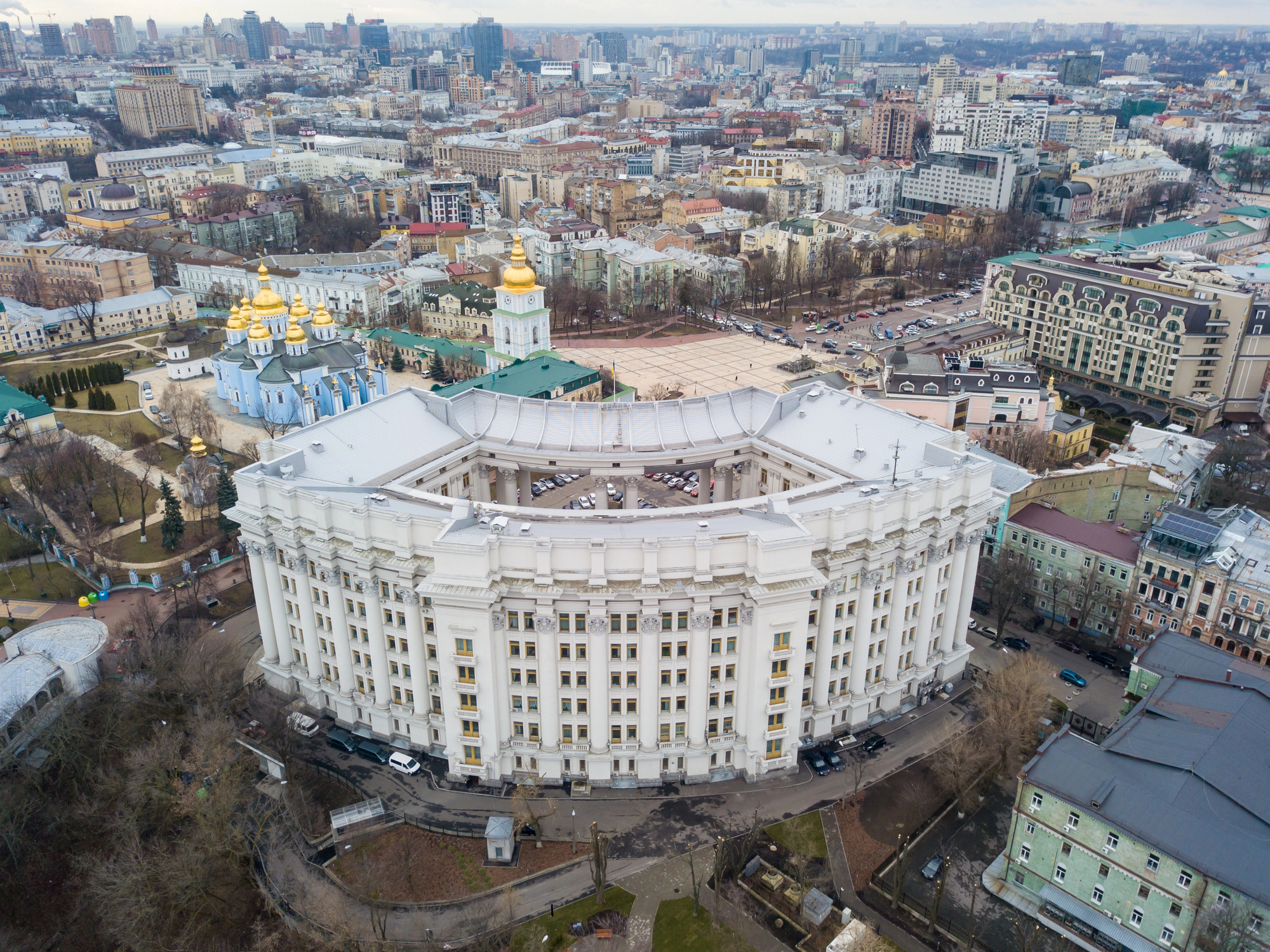Possible cancellation of the Moratorium on the sale of agricultural land has been a hot topic recently. This articles describes inefficiencies of the current situation and prompts three versions on how it can develop, analyzing pros and cons of each approach.
When the first post on the Land market was published by VoxUkraine, this topic was generally considered as of low priority. The new Presidential administration and the Government were too busy at that point with setting up the reforms implementation and land was not on top of their agenda.
The situation changed radically after the Parliament elections 2014, signing the Coalition agreement and recent declaration by the President of reconsideration of the Moratorium on agricultural land sales. Among other important developments in this field was establishment by the Ministry of Agrarian Policy and Food of a working group on Land Reform and drafting some key directions for reforms. International donors, national experts, NGOs, members of Parliament and various other stakeholders entered the discussion of Moratorium lifting and other key land reforms. However, this discussion lacks a structure or vision and very often is not productive.
All of a sudden, the public debate changed focus from whether the land market should exist in general to whether it should start immediately (by lifting the Moratorium in January 2016 as stipulated by the current Land Code) or at some later point in time (e.g. 2018).
In this column, we consider what are the pros and cons of fast vs. gradual introduction of the sales market for agricultural land. More importantly, we argue that a stepwise introduction of agricultural sales market would be the optimal strategy for the government.
Starting point
Ukraine enters the land market with 31 mln ha of agricultural land in private property (according to Statistical Form 6-Zem for 2014 (including Crimea and Sevastopol); of them 27.4 mln ha are arable land). Another 10.5 mln ha of agricultural land belongs to the State. The share of communal land is negligible. Most of the private land (about 27 mln ha) were transferred to about 6.8 mln new owners in a form of share (pay) of the former collective farms with an average size of land plot ranging in different regions from 3 to 6 ha. The current distribution has not changed since 2001 when Moratorium on the agricultural land sales was initially imposed. This distribution is highly equitable (there is very little variation in the plot size), but highly inefficient:
- It imposes high transaction cost on land users as more than 20 mln ha of land is rented out (about 4.7 mln rental contracts are signed every year);
- A large share of land is cultivated unofficially and in many cases illegally. Experts quote that there are about 1 mln parcels that belong to deceased owners (that would be an equivalent of 3-4 mln ha of land). There are also many discouraged owners who live outside rural areas and do not care about signing rental agreements.
- Many local land markets are dominated by a relatively small number of cultivators and the market power of landowners is relatively small. It is particularly the case of land shares (pay), when a single field belongs to several owners. As a result, the land is underpriced, which leads to overuse of land (compared to other factors of agricultural production) and provides for relatively unproductive use.
- Property rights for land are yet not well defined and protected as a large share of land is not mapped on the State Cadastral Map and among the mapped parcels there are numerous cases of overlaps and other technical errors. Millions of land parcels privatized before 2004 do not have clearly identified and/or documented boundaries, which (unlike other real estate) makes such pieces of property undefined.
- Currently, Ukraine has a dual system for recording the rights, their restrictions and transfers. The Land Cadaster records the physical characteristics of land parcels, and the State Registry of Immobile Property Rights records the rights and restrictions (e.g. property rights, rental, servitude) that are associated with land parcels. However, this system is too complicated and slow which has already created a backlog with registration of land rental rights.
- Finally, as was discussed in several publications on this topic, land vcannot be used as a collateral and the existing uncertainty with institutional arrangement of the land market discourages long term investments. Small and medium producers are those who suffer the most from this restriction.
Several scenarios for lifting Moratorium are discussed:
- Lifting it on January 1, 2016;
- Keeping the Moratorium to 2018 or later (for example the Law Proposal #2791 extends the Moratorium till 2020.);
- Stepwise introduction of the land market (hybrid scenario).
Before considering the pros and cons of each of these scenarios, we would like to emphasize that regardless the scenario, effectiveness of the market would depend primarily on the design of its mechanisms and institutions (e.g. if the size restrictions are imposed, who has the right to buy, are there any preemptive rights, what instruments are used to prevent speculation).
Quick start (Lifting the Moratorium in 2016)
The main advantage of this scenario is the use of political momentum for pushing through some of the most fundamental reforms. There are many examples in the world history that show that land reform is only feasible after revolutionary changes in a country. Another benefit is that the country stops losing its agricultural potential rather earlier as the land market would attract investment to the sector and provide for more efficient allocation of land. It is also possible that by starting the market, enough pressure will be put on the state institutions responsible for property right protection (Cadaster, Registry of Rights, Courts) to make them upgrading their systems rather fast.
The disadvantages of the quick start scenario are the following:
- The current system of registration of land transactions will be overwhelmed with the new set of sales and mortgage transactions, which, in turn, will lead to delays with processing, dissatisfaction and corruption.
- As the cadastral records are incomplete and contain errors, there is a high risk of fraudulent transactions and land related disputes.
- The current design of market mechanisms is not developed and tested yet, which creates a risk of fraud and mistakes including excessive land accumulation and speculations. Many people, particularly retirees and poor, do not have their parcels with properly identified boundaries and registered in the Cadaster. It means they are not ready to participate in the formal market or would have to sell land at a significant discount.
- Current economic crisis would keep the land supply high and prices low, which would make the most disadvantaged groups of current land owners (retirees, poor) relatively worse off. Recent surveys show that about 10-15% of land owners are considering selling their land, which is equivalent of 3-4 mln ha. With the expected price of land of about 1,000 USD, the market would need 3-4 bln USD of demand, which is a bit unrealistic. The producers (if allowed to the market) would have difficulties reducing their working capital and savings by that much. (For comparison, the State Statistics reports 1.8 bln USD of profit in agriculture in 2013 (before the crisis). The total amount of capital investments in all industries financed by bank loans was 1.8 bln USD. In 2014, the last number dropped to 0.8 bln USD.). Also, that would mean a drop in investments to new technologies for many years to come. On the other hand, the population would unlikely to generate that much of demand either (after two years of crisis and war). Thus, the land price would likely to drop below the above mentioned level and stay low for several years.
Long wait (Lifting the Moratorium in 2018 or later)
The main benefit of this approach is that the country would have enough time to develop institutions, improve cadastral records and overcome the crisis. However, as it happened several time before, the 2018 will come and the systems will not be ready yet. Moreover, by that time the country would lose years of more productive use of land and opportunities for investments. Finally, there will be very little political will to push for radical reforms before the upcoming elections.
Would a hybrid scenario help?
As can be seen, none of the above scenarios is perfect. Moreover, postponing reforms would likely to preserve the status quo. A possible solution that may combine the benefits of both previous approaches and may overcome some of the above threats would be a stepwise opening of the market. It would provide for opening the market in 2016, but only in selected rayons with the most complete cadastral records and political will for reforms at the local level. Such approach would allow focusing on careful design and adjustment of the new market institutions. It will also allow concentrating resources for completing the records for a relatively small area before opening up the market. At the same time, it provides time for other regions to prepare for the market. Another advantage could be that the limited supply of land would stimulate a quicker establishment of a fair price (which would match the economic return to land). Gradually, other regions could join the market with one or two year lag. Finally, the hybrid scenario would provide a ground for a political compromise among proponents and opponents of land reform.
Following the same logic, the restrictions to market participation that may initially be installed (e.g. limited size of land holding, access of legal entities and foreigners to the market) could be removed gradually after the market becomes more mature.
The less restrictive is the market for agricultural producers, the more competition and better allocation of land resources could be achieved. On the other hand, a fair level of social justice can be achieved if the state can prevent the fraud and protect the property rights, and rights of the most vulnerable population). Information and education campaign would be a necessary part of this process. From this perspective, the hybrid scenario provides better opportunities for learning from the pilot regions experience and would result in a more equitable price.
In summary, the country is likely to lose if the Moratorium is extended in its current form. Small and medium producers and rural residents would be the most disadvantaged group if the status quo is preserved. However, opening up the sales market is not the only strategic direction for the land reforms in Ukraine. The market could not be effective without proper infrastructure for transactions and property right protection. There are also issues with the transparent use of the state land, land auctions, etc. All these issues should be considered as a part of a comprehensive reform strategy adopted and implemented by Government over the next several years.
Attention
The authors do not work for, consult to, own shares in or receive funding from any company or organization that would benefit from this article, and have no relevant affiliations





